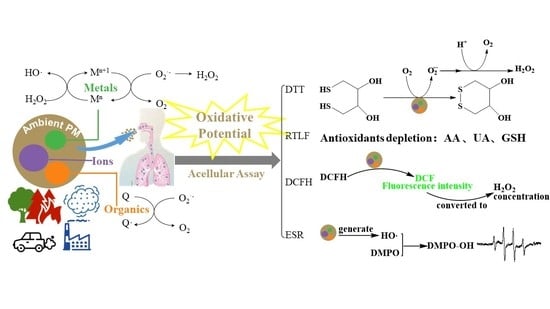Oxidative Potential Induced by Ambient Particulate Matters with Acellular Assays: A Review
Abstract
Share and Cite
Rao, L.; Zhang, L.; Wang, X.; Xie, T.; Zhou, S.; Lu, S.; Liu, X.; Lu, H.; Xiao, K.; Wang, W.; et al. Oxidative Potential Induced by Ambient Particulate Matters with Acellular Assays: A Review. Processes 2020, 8, 1410. https://doi.org/10.3390/pr8111410
Rao L, Zhang L, Wang X, Xie T, Zhou S, Lu S, Liu X, Lu H, Xiao K, Wang W, et al. Oxidative Potential Induced by Ambient Particulate Matters with Acellular Assays: A Review. Processes. 2020; 8(11):1410. https://doi.org/10.3390/pr8111410
Chicago/Turabian StyleRao, Lanfang, Luying Zhang, Xingzi Wang, Tingting Xie, Shumin Zhou, Senlin Lu, Xinchun Liu, Hui Lu, Kai Xiao, Weiqian Wang, and et al. 2020. "Oxidative Potential Induced by Ambient Particulate Matters with Acellular Assays: A Review" Processes 8, no. 11: 1410. https://doi.org/10.3390/pr8111410
APA StyleRao, L., Zhang, L., Wang, X., Xie, T., Zhou, S., Lu, S., Liu, X., Lu, H., Xiao, K., Wang, W., & Wang, Q. (2020). Oxidative Potential Induced by Ambient Particulate Matters with Acellular Assays: A Review. Processes, 8(11), 1410. https://doi.org/10.3390/pr8111410








